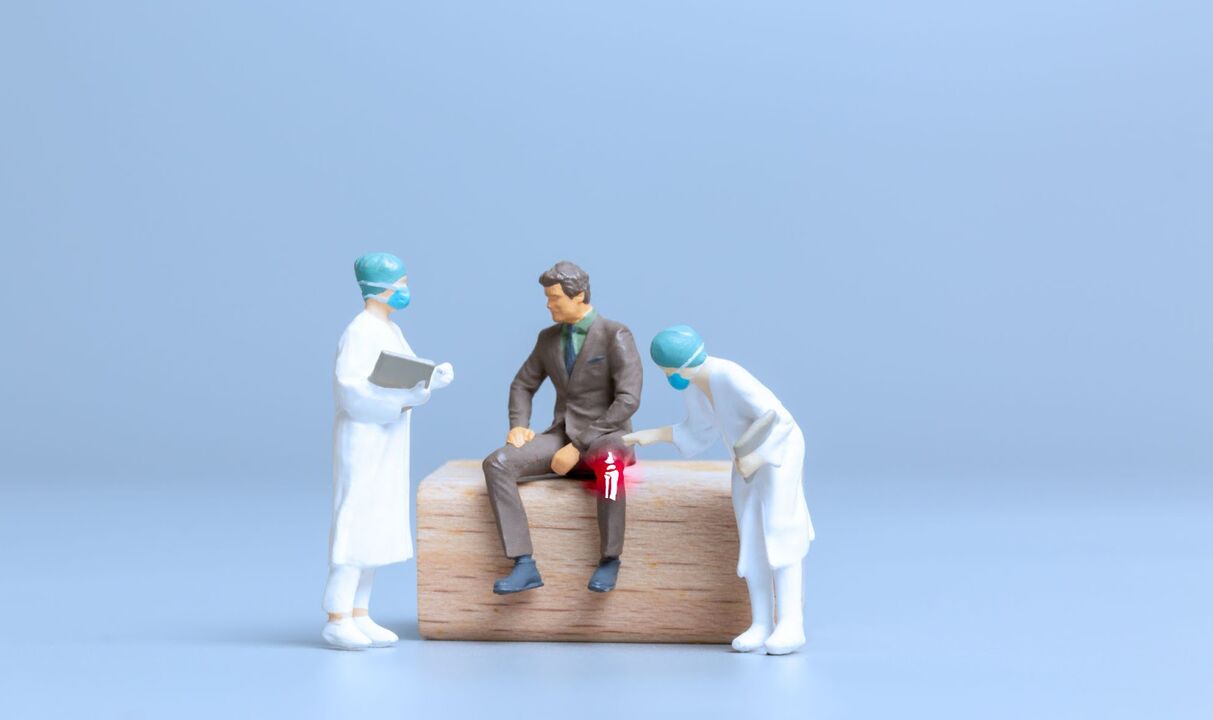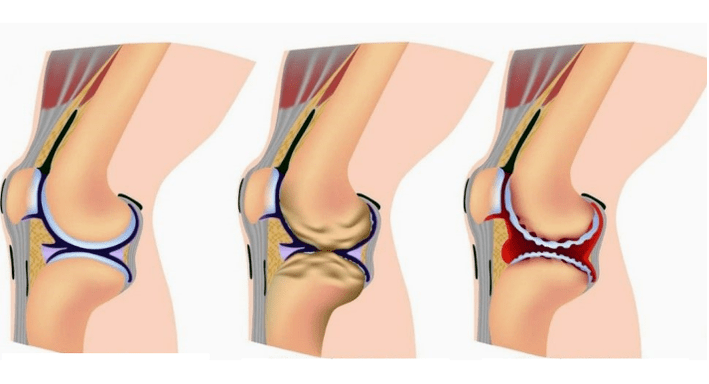Both osteoarthritis and arthritis affect the joints and have similar symptoms. Therefore, they are often confused. Even though their names are consonants, they are completely different diseases. If arthropathy destroys the joints, then arthritis causes an inflammatory process throughout the body. This is the fundamental difference between osteoarthritis and arthritis. Now in more detail.
The most important thing about arthritis
Arthritis is a progressive disease caused by infections, immune system or metabolic disturbances, hormonal disturbances. There are more than 200 varieties. The main symptoms of arthritis are inflammation, swelling, and redness of the skin in the joint area. In advanced stages, the disease can cause complications to the heart, kidneys and liver. At risk are people between the ages of 25 and 40.

arthritis symptoms
The disease may be hidden. The first signs of arthritis are usually:
- pain. It comes on suddenly and gets worse with exercise. Feeling stronger at night and feeling stiff after sleep;
- Organizational changes. Arthritis is characterized by swelling and redness of the skin, synovitis and bursitis are possible (in the first case, this is an inflammation of the synovium, in the second, the joint pocket);
- temperature rises. Usually, the temperature of the affected joint will increase. Hyperthermia (38-39 degrees) can also be observed.
Symptoms aggravate the manifestations of the inflammatory process:
- Great worship;
- painful urination;
- chills;
- conjunctivitis.
If symptoms are ignored, the disease can become chronic. As a result, the work of internal organs is disturbed, and joint changes can lead to disability.
The most important thing about arthritis
Osteoarthritis is a non-inflammatory disease that causes the deformation and destruction of cartilage tissue. Cartilage covers joint surfaces and prevents bones from touching each other. When it is in order, one can move freely and painlessly. The causes of the pathology can vary: genetics, deviations in joint structure, injury, overload. Unlike arthritis, this disease affects only the joints.
Osteoarthritis usually occurs in older people because the surfaces of joints wear down with age. The disease is also seen in people whose occupation places a severe burden on the joints of the hands, wrists and legs. For this reason, arthropathy is also known as "athlete's disease" or "pianist's disease".
arthritis symptoms
The disease is indolent. In the initial stage, symptoms may not appear. The first symptoms of osteoarthritis are usually as follows:
- Joints that don't move after sleep or prolonged rest, but disappear quickly with exercise;
- crunch, rattle, click—all accompanied by a dull sound;
- Pain during exercise and exertion.
In the later stages of arthropathy, symptoms are already evident: joints become more immobile, pain occurs, and "hard joint" syndrome develops - soft cartilage tissue is replaced by bone growth. The progression of the disease results in the immobilization of one or more joints.
Visible signs of arthritis and joint disease

You can easily see the difference by taking a closer look at the symptoms and causes of joint disease and arthritis. We combined differences in disease to make this difference more pronounced.
logo |
joint |
arthritis |
Affected area |
space between joints, cartilage, and bones |
Joints, bones, internal organs: heart, liver, kidneys |
the nature of the disease |
Depraved, destructive. Only the joints are affected |
inflammation. The disease affects internal organs |
Common causes |
Increased joint pressure, genetic |
Severe infections, metabolic disorders |
age |
It develops in people of maturity or old age. Risk Factors - Activities Associated with Excessive Stress on the Joints |
It develops in people aged 25-40 but also occurs in adolescents and children |
pain |
This is usually a mild pain during exercise and power load. In later stages, the pain becomes more intense. |
Exercise can exacerbate pain, and it is most intense in the early morning. |
Crunching and gnashing of teeth |
Deaf clicks, crisp crunching, or gnashing of teeth are characteristic |
not characteristic |
deformation |
Deformation of the joints, inflammatory processes appear |
Sealing, swelling, redness, and warmth in the joint area. Deformation occurs when one disease develops into another. |
Liquidity drops |
Arthropathy combines only the affected joints. |
generalized or joint stiffness |
acute symptoms |
Joints "harden" due to the formation of bone growths. In this case, the person can no longer move his legs or fingers. |
High temperature - 38-39 degrees, conjunctivitis develops, collapse and fever |
development of symptoms |
Slow progression, initially asymptomatic |
In the initial stage, symptoms of inflammation appear in the affected joint area. |
Prevent arthritis and joint disease
The disease is easier to prevent than to treat. Disease prevention includes:
- Moderate physical activity - fitness, swimming pool, skiing, cycling are all suitable;
- Joint gymnastics - you can do it with a trainer in exercise therapy or stretch your joints at home;
- Proper nutrition - If you're prone to bone disease, it's worth giving up red meat and high-fat foods. It is best to add more fruits and vegetables, fish and seafood to your diet. If you are overweight, you should diet;
- Drink enough water - 2 liters per day. Alcohol abstinence is recommended.
To reduce the risk of illness, doctors recommend wearing comfortable shoes, not cross-legged, not catching a cold, and not succumbing to stress.
If you have symptoms similar to arthritis or joint disease, please make an appointment at our Orthopedic Centre. These disorders significantly reduce quality of life, so prompt diagnosis and initiation of treatment are important.















































